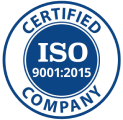Converting a Partnership to a Private Limited Company Service
Starting from ₹15,000 + GST




Table Of Content
- Converting a Partnership to a Private Limited Company
- Benefits of Converting a Partnership to a Private Limited Company
- Eligibility for Partnership to Private Limited Conversion
- Partnership to Private Limited Company Conversion Process
- Documents Required for Converting a Partnership to a Private Limited Company
- FAQs
- Get in Touch with us
Converting a Partnership to a Private Limited Company
A partnership is a simple and efficient structure for small or family-run businesses, offering ease of setup and operational flexibility. However, as businesses expand, they often require a more formal structure to accommodate growth and safeguard interests. Converting a partnership to a private limited company provides benefits such as liability protection, improved credibility, and access to funding opportunities. This transition allows businesses to grow while aligning with regulatory and operational needs.
Benefits of Converting a Partnership to a Private Limited Company
Eligibility for Partnership to Private Limited Conversion
Partnership to Private Limited Company Conversion Process
Step 1
Partners who will become directors need a DSC and DIN, which can be obtained by submitting required forms on the Ministry of Corporate Affairs (MCA) website
Step 2
Submit the Reserve Unique Name (RUN) application on the MCA portal. Ensure the proposed name is not identical to any existing company
Step 3
Draft MOA and AOA. Memorandum of Association (MOA) defines the company’s main objectives and scope and Articles of Association (AOA) outlines the company’s regulations, governance structure, and shareholder relationships
Step 4
Once approved by the Registrar of Companies (ROC), a Certificate of Incorporation is issued, confirming the company’s legal status as a private limited entity.
Step 5
Create an agreement for the transfer of assets and liabilities from the partnership to the private limited company, binding the new entity to the responsibilities of the former partnership.
Step 6
Update GST registration, import/export codes, and other licenses with the new company’s name and structure.
Documents Required for Converting a Partnership to a Private Limited Company
FAQs
What is the minimum number of shareholders required for a private limited company?
A private limited company requires a minimum of 2 and can have a maximum of 200 shareholders.
Do all partners need to become directors in the new company?
No, only two partners are required to serve as directors in the private limited company.
Is there a minimum capital requirement for a private limited company?
While an authorized capital of INR 1 lakh is suggested, there is no strict minimum requirement.
Can foreign nationals be shareholders in a private limited company?
Yes, foreign nationals can be shareholders, subject to Foreign Direct Investment (FDI) regulations.
What are the tax implications of converting a partnership to a private limited company?
Converting may trigger capital gains tax on transferred assets, depending on their valuation.
Is professional assistance mandatory for the conversion process?
While not mandatory, it is advisable to seek legal or financial expertise to ensure a smooth conversion.
How long does the conversion process take?
The process generally takes 2-3 weeks, depending on document readiness and ROC approvals.
Can I retain the same name as the partnership for the new company?
Yes, if the name is available and approved by the MCA.
Will the new company have the same PAN as the partnership firm?
No, the private limited company will receive a new PAN.
Can all liabilities be transferred to the new company?
Yes, liabilities can be transferred to the new entity with creditor approval.
Are there any restrictions on profit distribution in a private limited company?
Profit distribution must align with the company’s AOA and can be made as dividends.
Is it necessary to inform clients and vendors of the conversion?
Yes, informing clients, vendors, and other stakeholders about the structural change is advisable for transparency.
Do private limited companies have to undergo an annual audit?
Yes, private limited companies are required to conduct annual audits as per the Companies Act.
What happens to existing contracts under the partnership?
Contracts can be transferred or re-established in the name of the private limited company, subject to agreement by the parties involved.
Does the conversion affect the company’s brand or reputation?
The conversion generally enhances the company’s reputation, as a private limited structure is viewed as more professional and credible.
